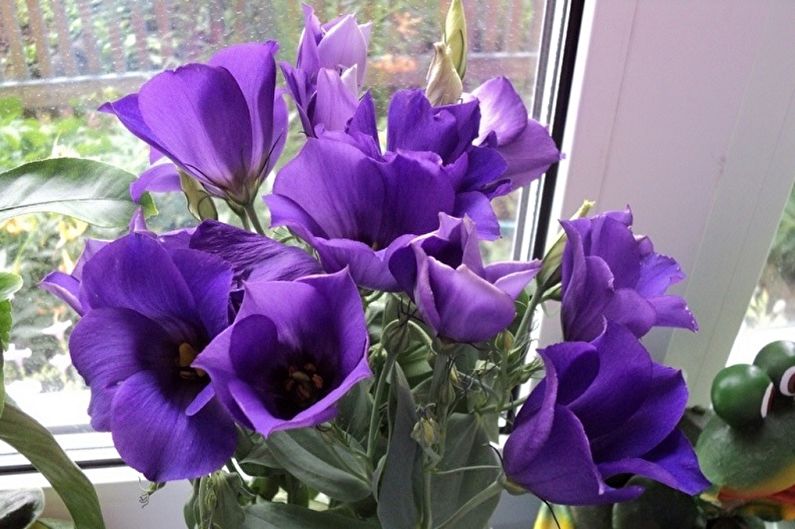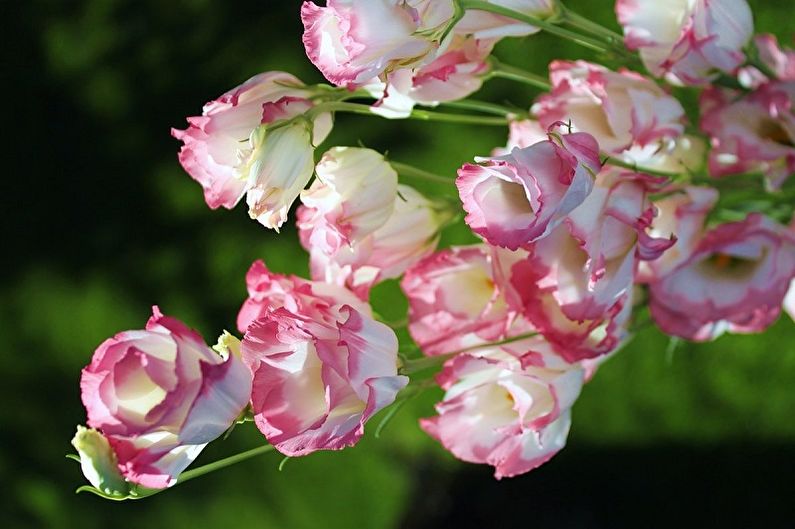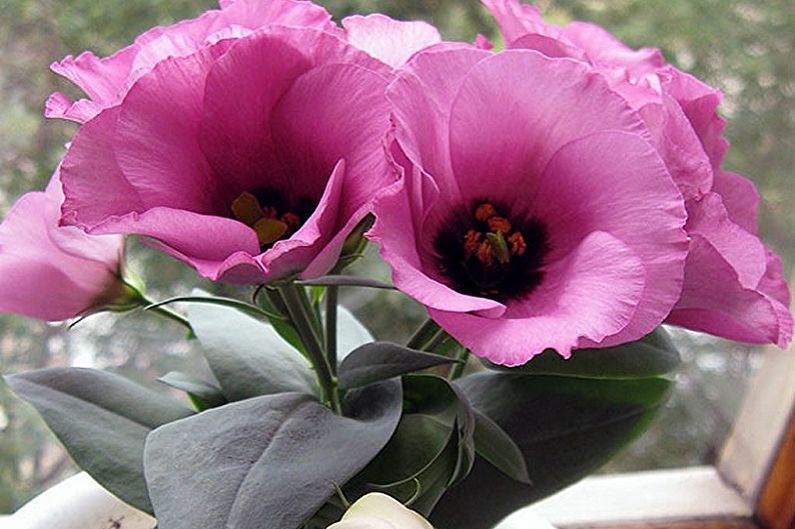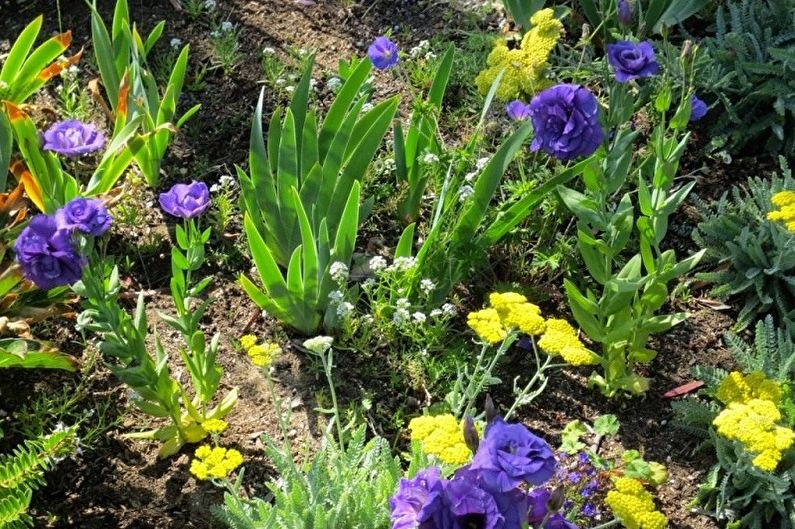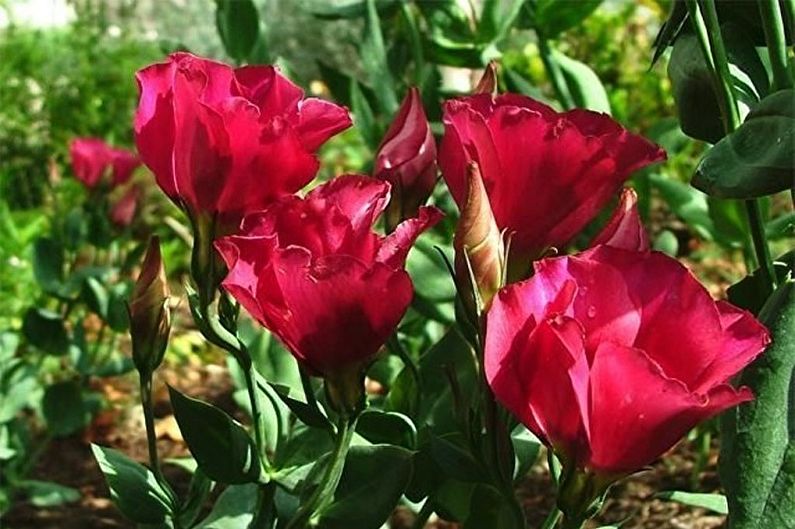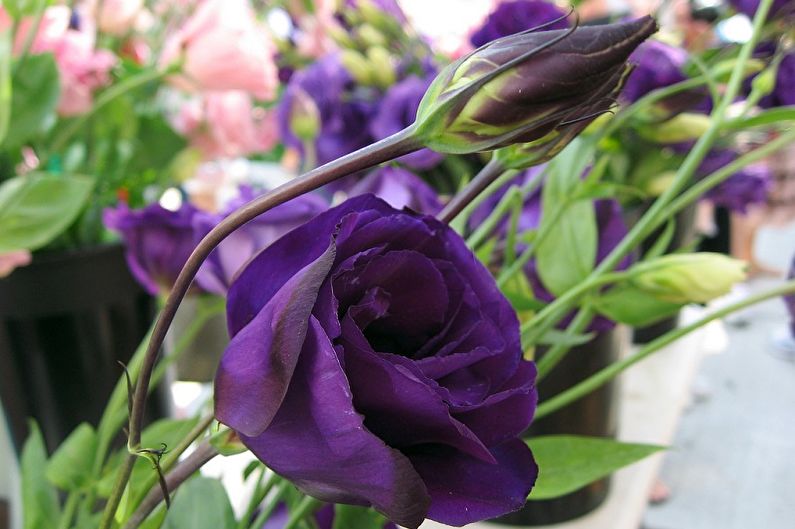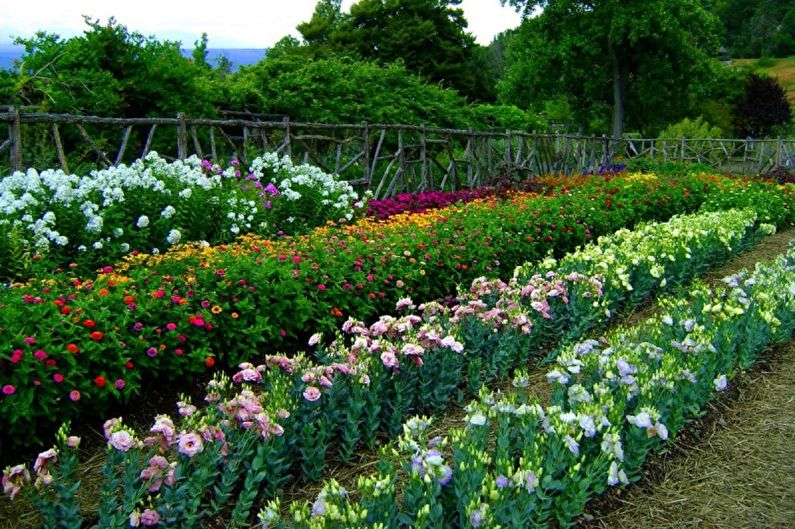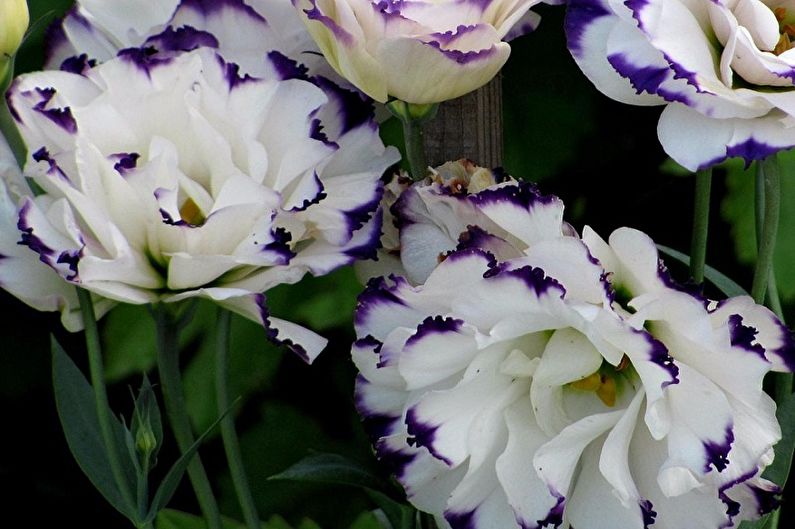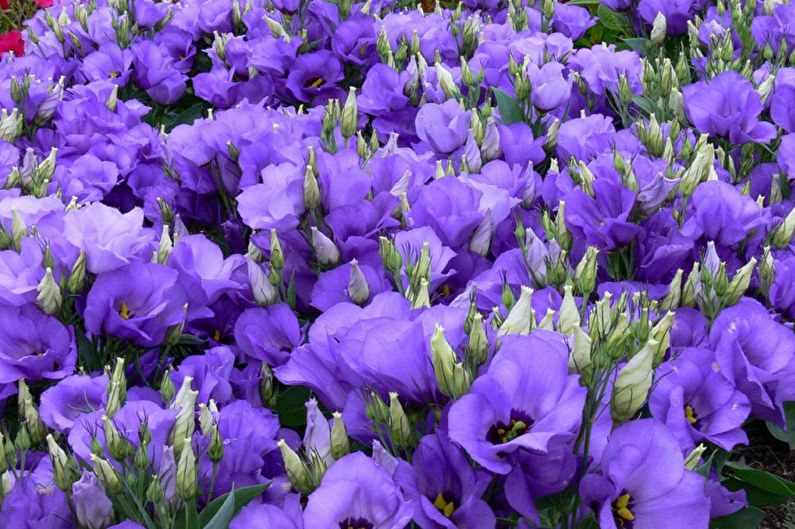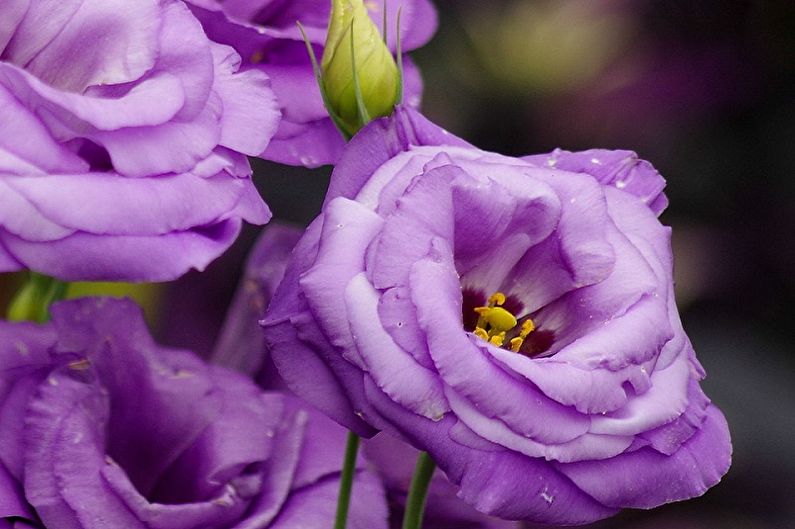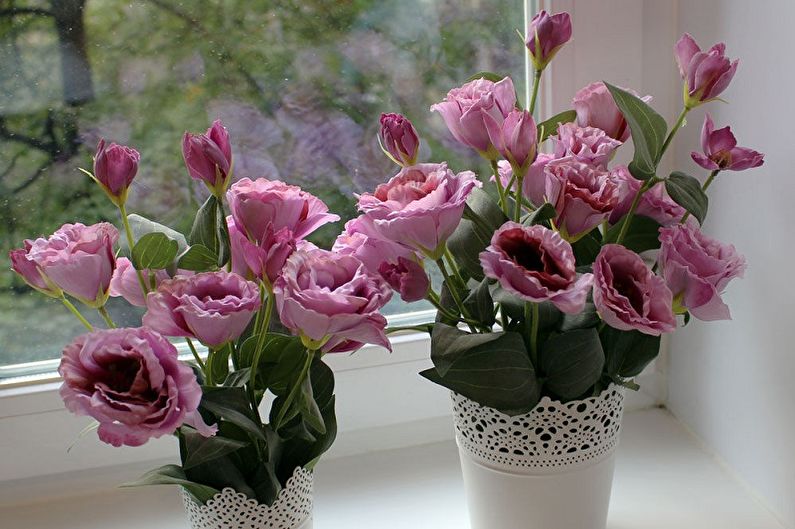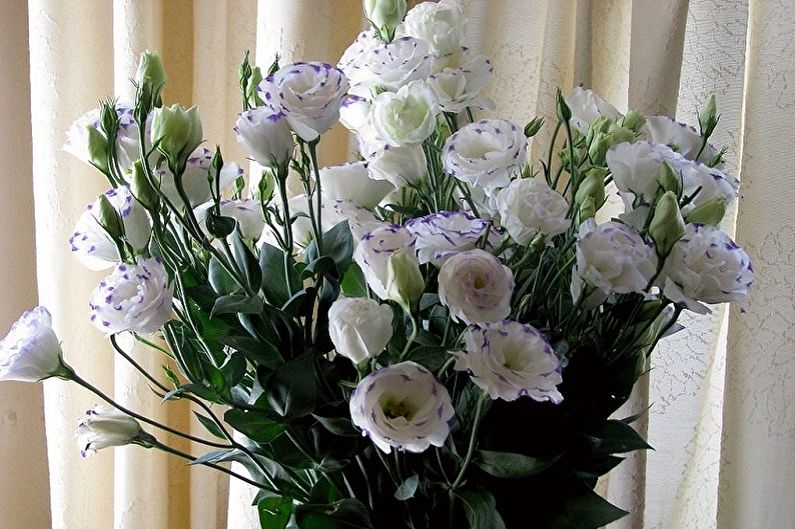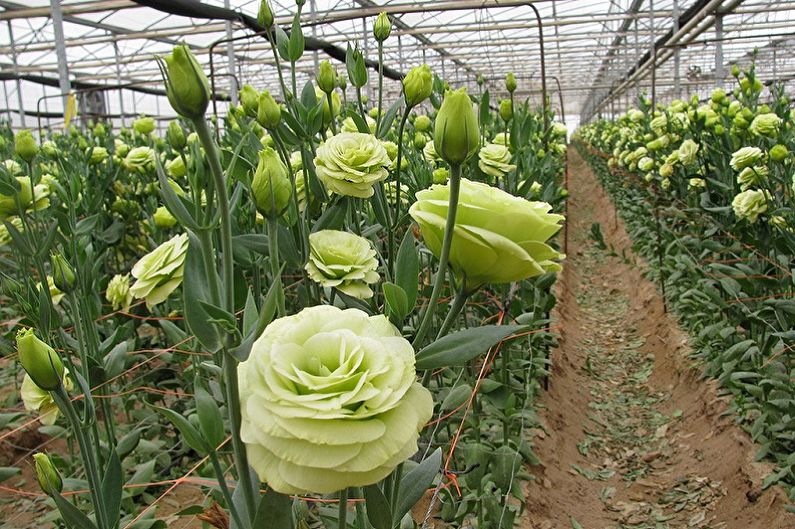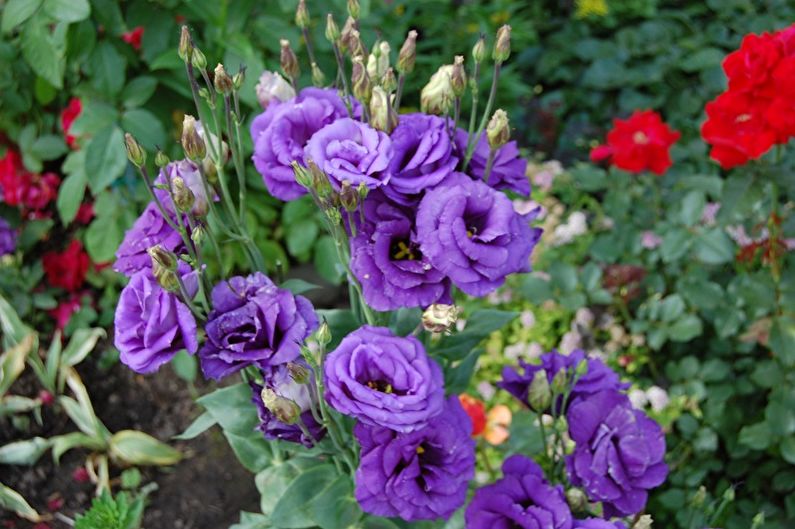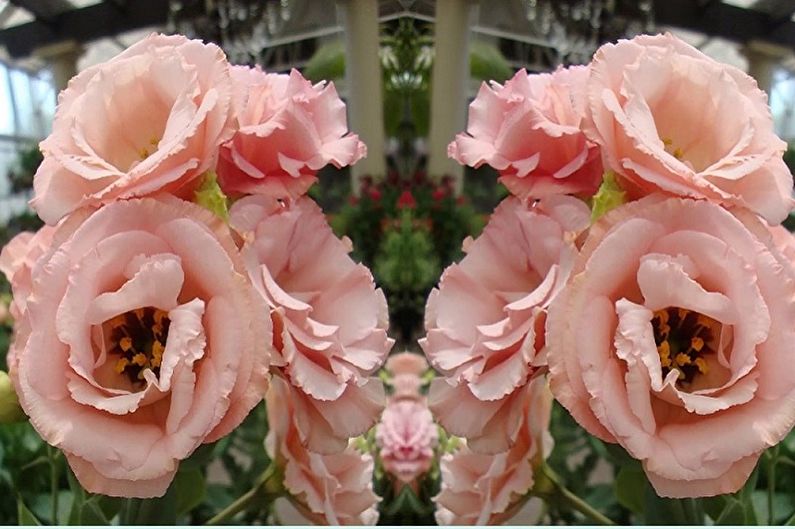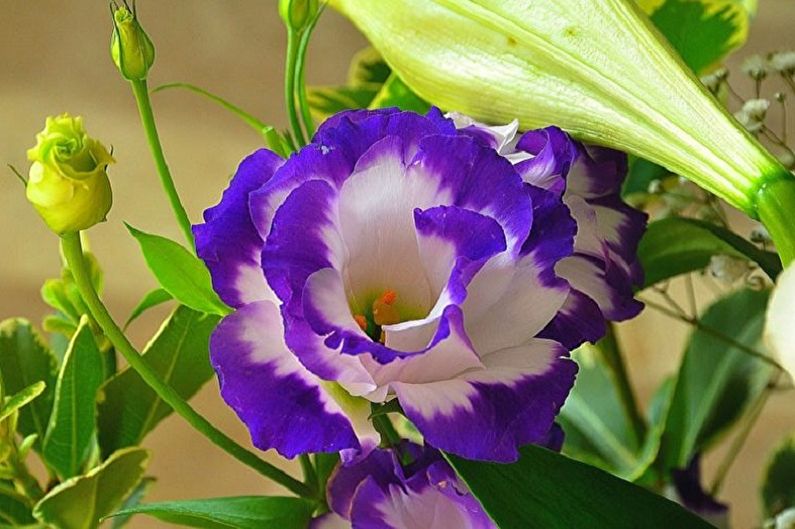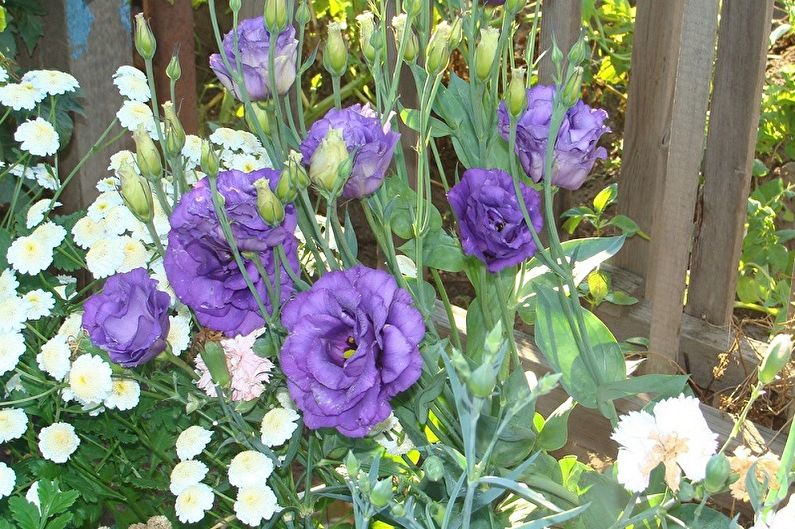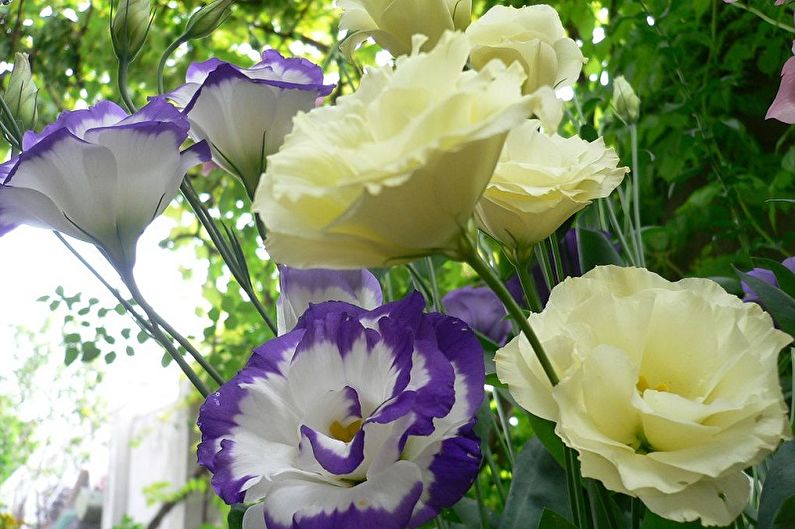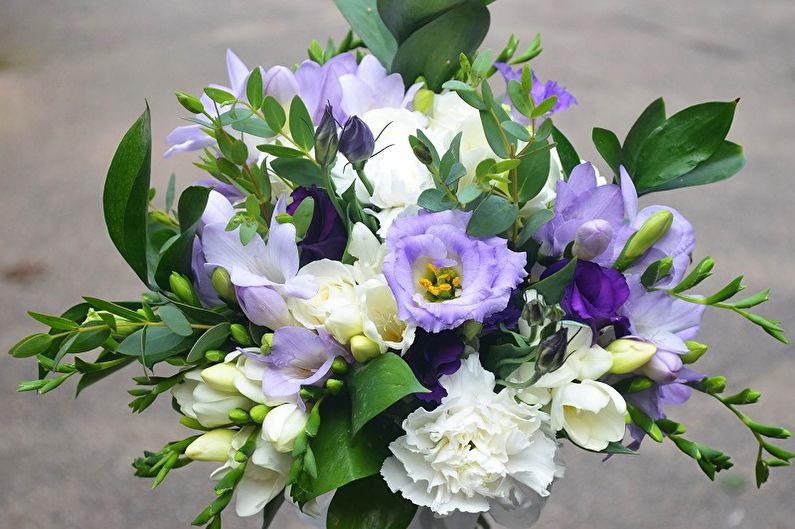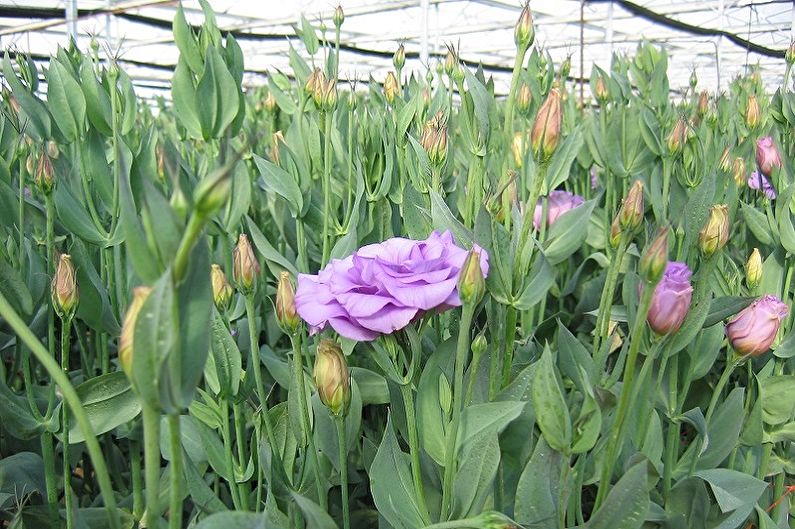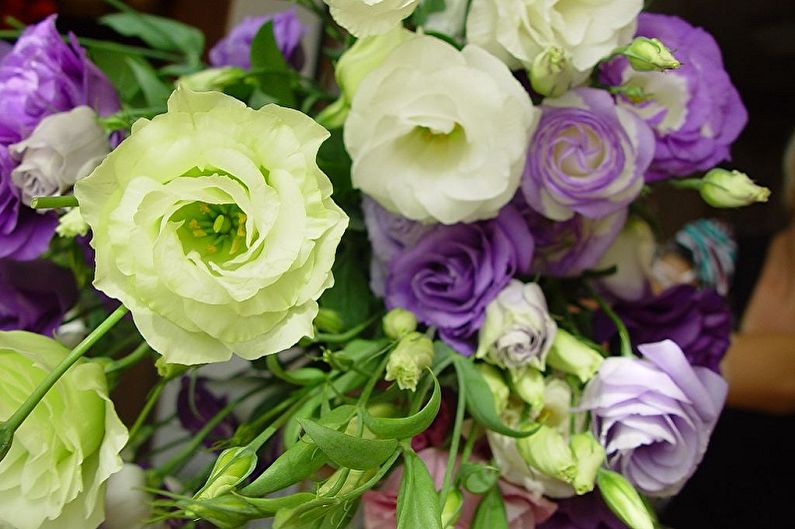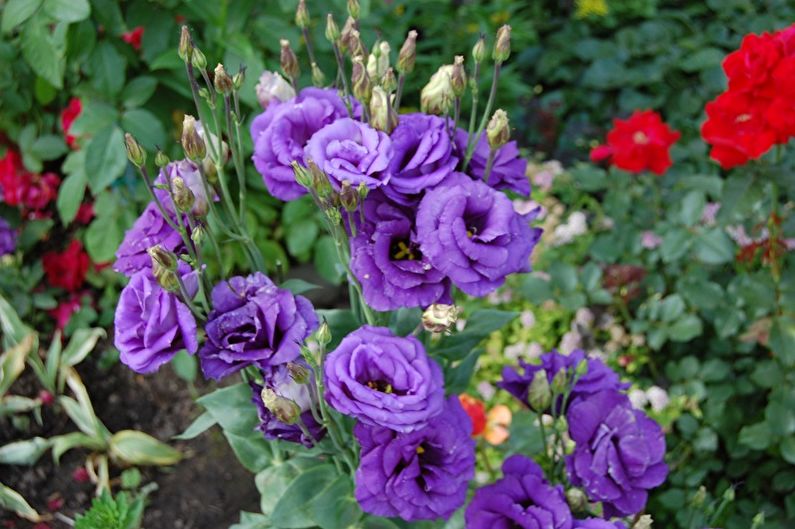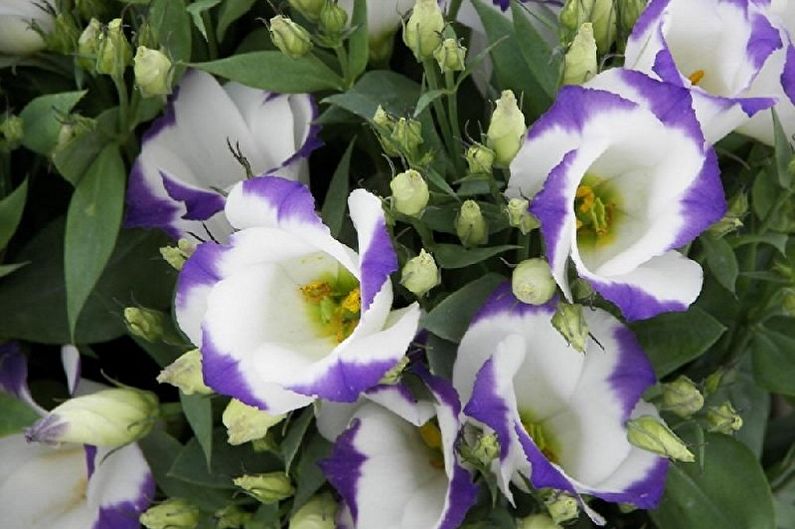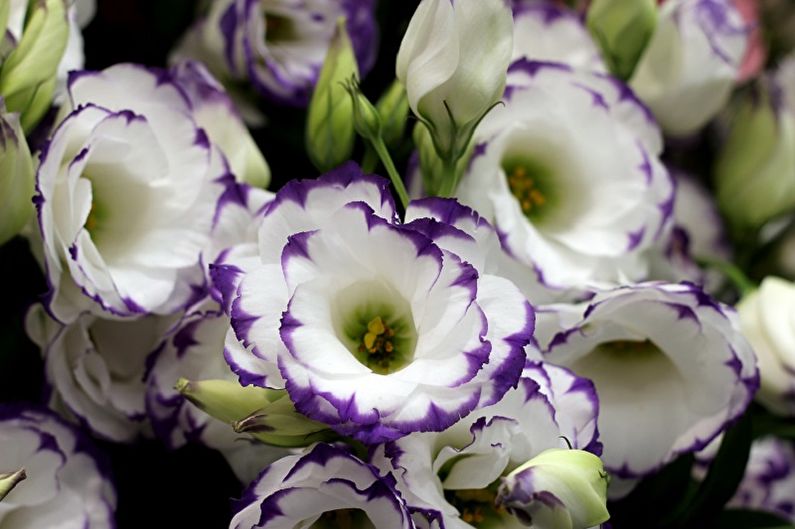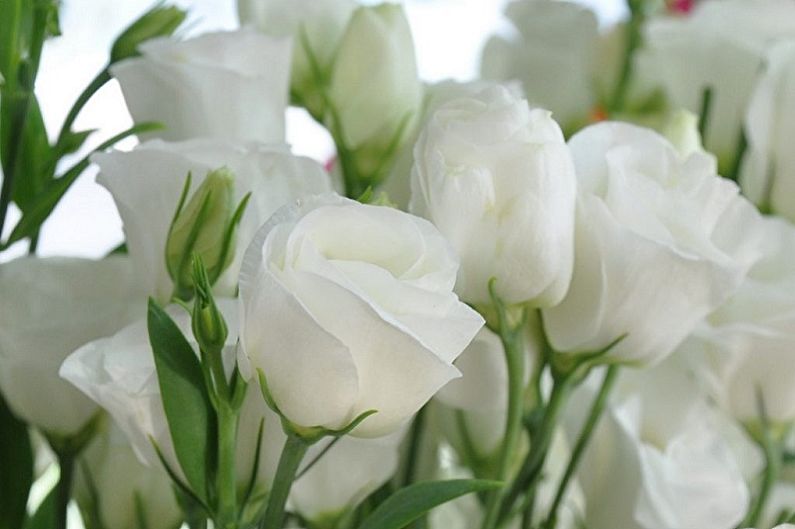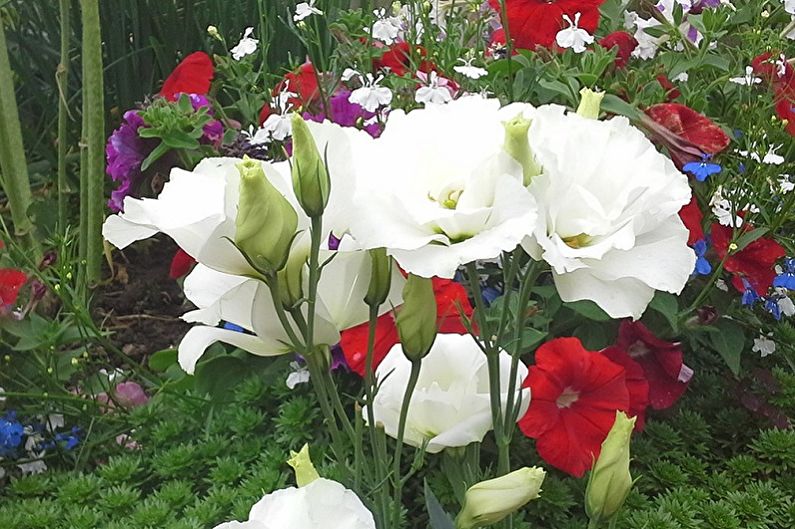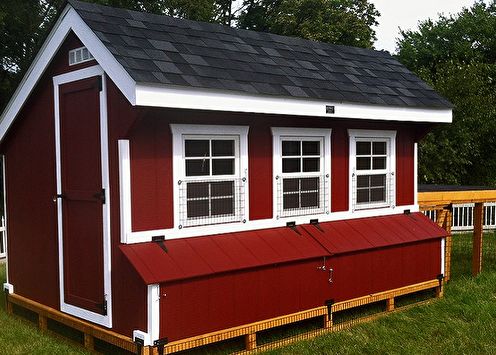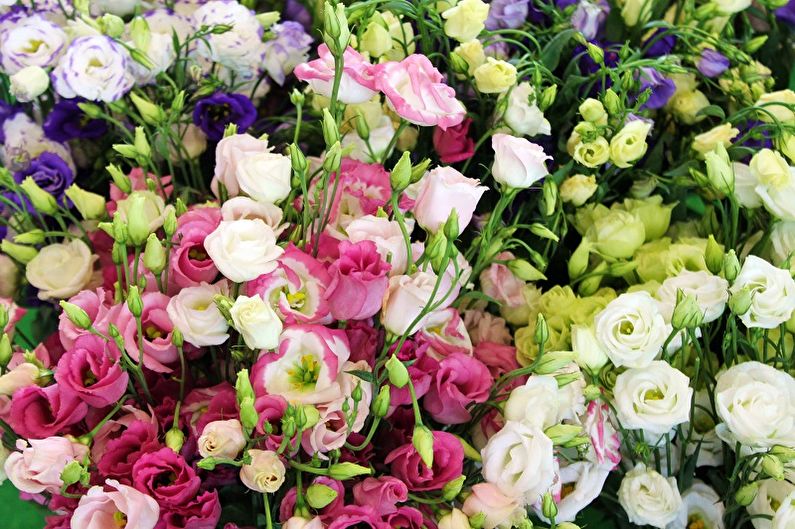
Refined flowers, reminiscent of buds of barely blossoming roses, are still little known to amateur florists. In their historic homeland - in the southern states of America - they are called "Texas bells." Wild eustoma has a bright purple-pink color and is very prominent in the prairie steppe landscape. The advantage of cultivars is larger petals and a wide palette of shades, thanks to which the Irish rose (also called eustoma / lisianthus) is able to decorate any flower bed or home mini-greenhouse.
General characteristics of eustoma (lisianthus)
One and two year old eustoma plants belong to the Gorechavkov family. Their natural habitat is the equatorial and subequatorial expanses of Florida, Texas, Mexico, Brazil, and parts of the Panama and Caribbean Islands. In appearance, as well as some botanical features, lisianthus is similar to ordinary poppies. In particular, the similarity is manifested in the form of petals, the structure and size of the flower, the box and the extremely small seeds contained in it. Unopened buds, as well as blooming terry varieties are closer to roses, although in comparison with them they look more tender and airy.
There is no classification of Irish roses as such, since all these plants are of the same species. Differences arise only as a result of selection, the purpose of which is to achieve even greater decorativeness by increasing the number of buds and the unusual color of the petals. Plain white, yellow, red, and purple varieties, as well as flowers with a contrasting border or a soft gradient of shades, are highly valued by florists. From cut eustoma, luxurious bouquets are obtained, as well as elegant compositions for decorating weddings.
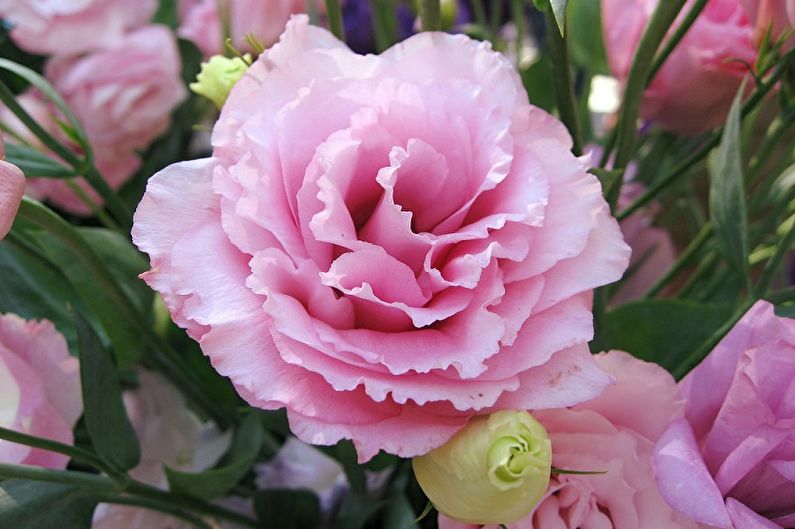
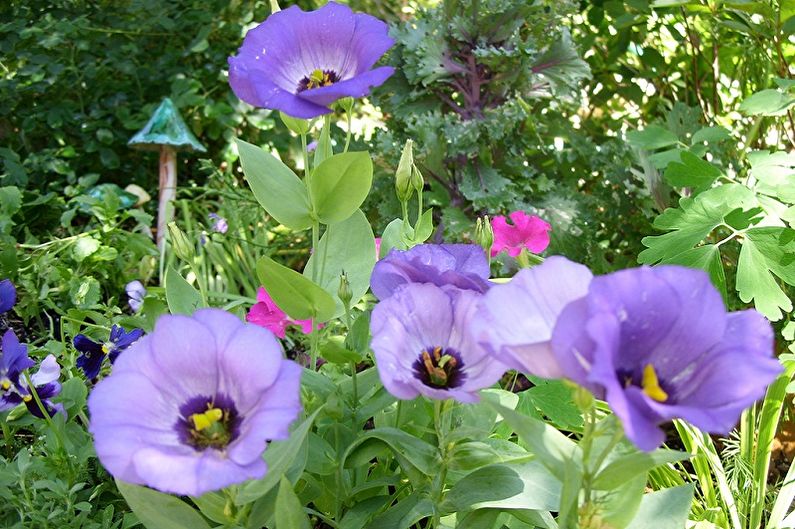
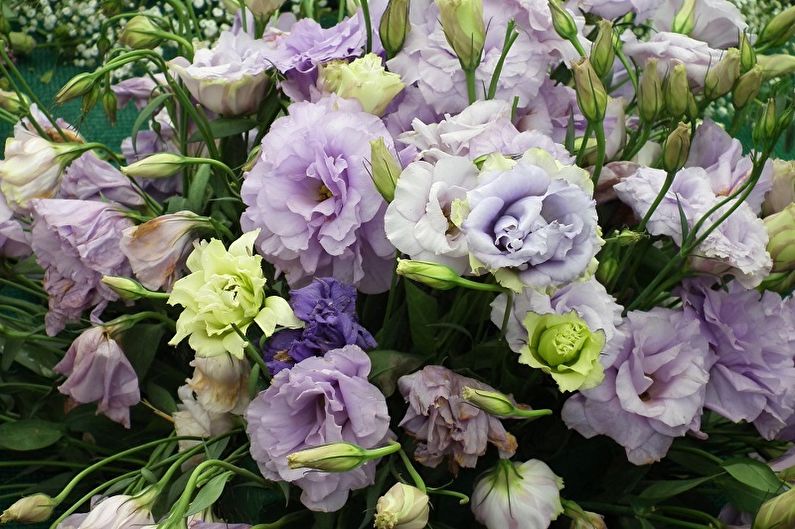
How to grow eustoma (lisianthus)
The southern origin of Texas bells is the reason for the rather capricious behavior of these flowers in a temperate climate. After all, summer at the equator lasts almost all year round, which means that for normal development the eustoma will have to provide bright artificial lighting and warmth comfortable for it.
Lysianthus cultivation is carried out in only one way - seedlings from seeds, and the cycle should be started no later than January. It takes at least 20 weeks, that is, 5-6 months, from the appearance of seedlings to the beginning of flowering, and even the germination of microscopic grains requires at least 20-30 days. Vegetative propagation of the eustoma is not amenable, so it is unlikely that it will be possible to divide an adult bush or root a stalk.
Irish rose seeds are recommended to be sown in 1-2 pieces in separate cassettes, plastic cups or peat tablets. A plastic container with a transparent lid will also be a good option - it can easily create the effect of a greenhouse in it. The optimal substrate for future seedlings is light turf ground with the addition of river sand, and from ready-made mixtures, you can choose the soil for indoor violets (senpolia). The soil should be well moistened with warm water, after which the grains should be deepened into it by 2-3 mm, tightly cover the containers with a transparent cover or polyethylene and left at + 20 ... + 25C for germination. Extra light at this time is not needed, the main thing is heat and constant moderate humidity.
When green shoots appear, the eustoma should be placed under a fluorescent lamp, otherwise the seedlings will stretch and turn yellow. All this time it is important to regularly water them at room temperature and gradually open the film so that ‘greenhouses’ get air.Around the beginning of spring (March-April), two-month-old plants dive one by one into separate pots, where there must be good drainage and nutritious sod-black earth with sand. It is impossible to expose tender seedlings in direct sunlight, but diffused daylight near the south window or on a warm balcony will do her good.
Low-growing indoor varieties of lisianthus still leave blooming on the windowsill, while garden ones are transplanted into the open ground only after the threat of frost completely disappears - it all depends on the climate in a particular region. The plot for these flowers should be sunny and quiet, sheltered from the wind, with moderately moist chernozem soil. The first week or two after planting, the seedlings should be covered in halves of plastic bottles with open caps - for adaptation and protection from night cold. In tall varieties, after 6–7 pairs of leaves, pinch the central stem to form more lateral shoots, and the bush looks more voluminous. If done correctly, lush bouquets of Irish roses can be admired for 2-3 months - from July-August to October.
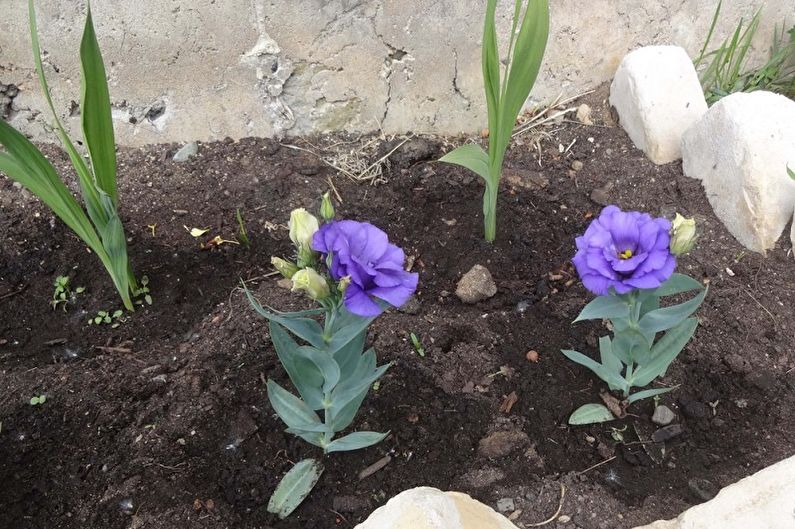
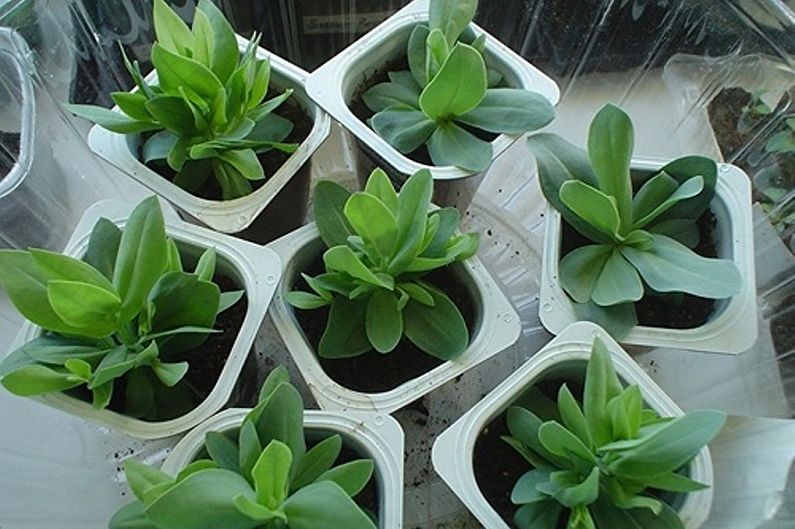
Care for eustoma (lisianthus)
The cultivation of “gentian prairie” can hardly be called a simple activity, but the appearance of exotic buds will fully justify the effort spent. Healthy bushes with lush and beautiful inflorescences are the result of observing a whole list of conditions in which an eustoma can develop as well as in a natural environment of eternal equatorial summer.
Lighting
The sun lingers over the central meridian of the Earth for the longest time, which means that the Texas bell initially needs a long daylight and a large number of photons. When cultivating it from seedlings, one cannot do without a special lamp that should shine for at least 14 hours a day. Adult plants will have enough ultraviolet light on the southern windowsill or flower bed, located on the warm side of the building.
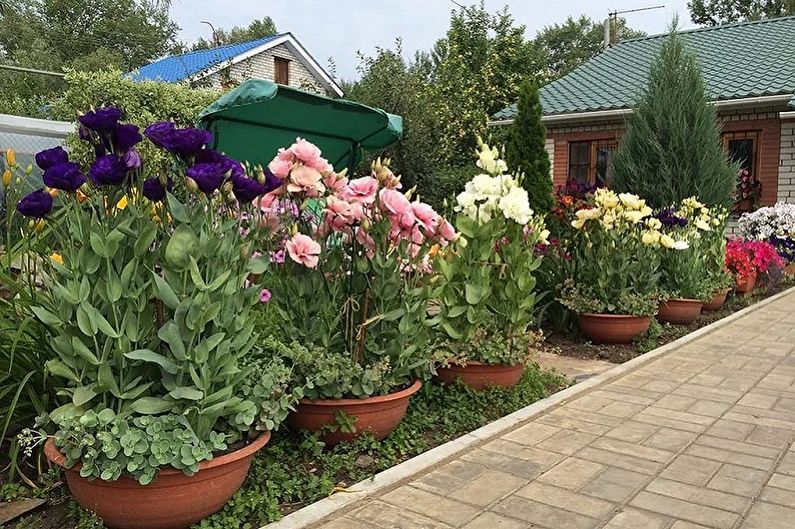
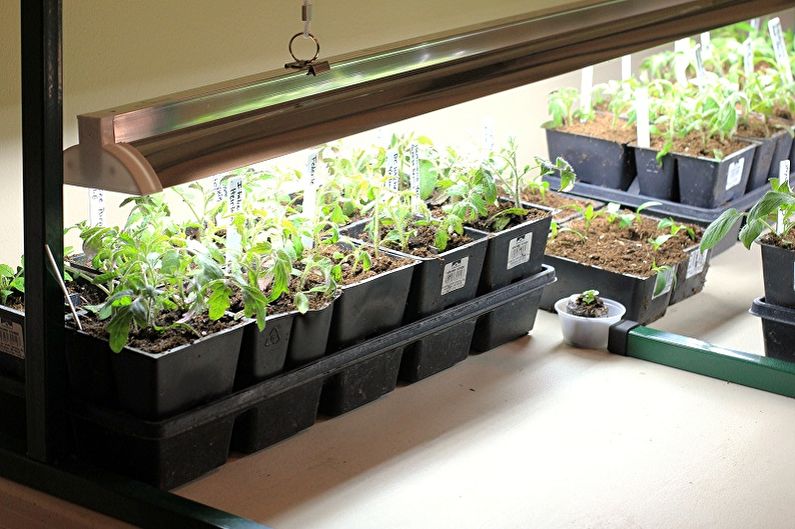
Temperature
Throughout the growing season, starting from planting seeds and ending with the ripening of bolls, lisianthus should be warm most of the time. The ideal temperature for a capricious flower is + 20 ... + 25C, it does not tolerate long-term cold - it can get sick. Professionals advise cutting off two-year varieties after flowering, leaving only two pairs of lower leaves, transplant into a pot and keep at + 12 ... + 14C in a well-lit place until next summer. In this case, plants should only occasionally be watered with settled water.
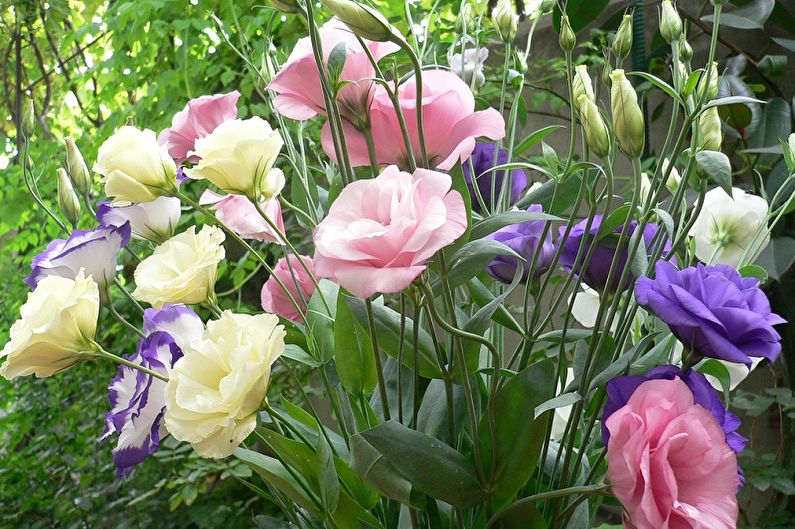
Watering
Soil moistening under eustoma should be carried out moderately, but regularly. It is very useful to spray the plant with warm water (preferably in the evening, when the liquid does not evaporate in the sun). The Texas bell is not adapted to accumulate moisture, since it often rains in its habitats. Over-dried soil and air will cause the leaves and stems to dry out quickly, which can stop flowering completely.
If the substrate is too dense, and the temperature is lowered, then with excessive watering or stagnation of water, root decay may occur. To avoid such consequences, with prolonged rainfall, it is advisable to loosen the earth around Irish roses periodically, you can also mix river sand, peat, sawdust or some small drainage to it.
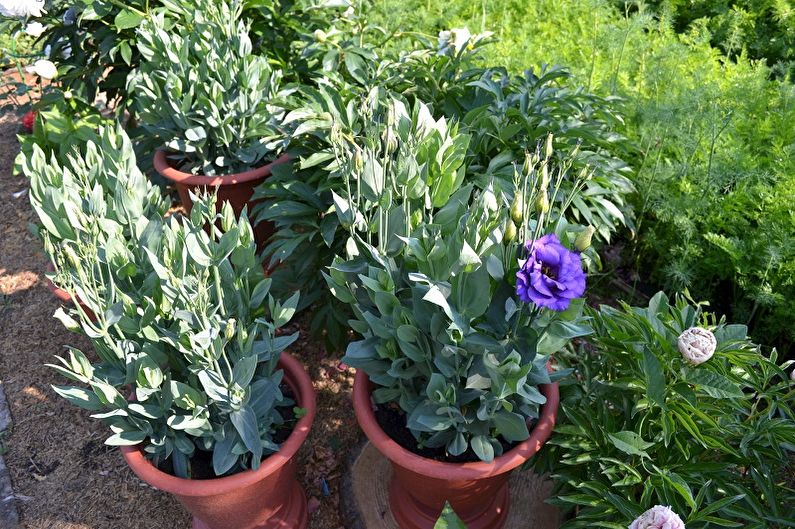
Fertilizers
Fertilizing young eustoma plants is carried out in several stages. The first - 3 weeks after germination - is spraying the sprouts with zircon, which contributes to the development of roots.
After picking the seedlings, water-soluble preparations with a high content of nitrogen and calcium are added to the individual pots for rapid growth of green mass every two weeks. Before flowering, potassium humate (tea solution) and potassium phosphate are used.
These additives contribute to the formation of more buds and favorably affect the bushes in general.As for the dosage, it is better to adhere to the recommendations indicated on the packaging of the selected fertilizer.

Pest and Disease Control
Like many exotic cultures, lisianthus is very susceptible to all kinds of diseases. A great danger is the so-called “black leg”, which affects roots due to excessive watering and cold, ground fungi, powdery mildew. To neutralize them will help soil treatment with special preparations - "Fitosporin" before sowing and replanting, "Fundazol" or its analogues - if prolonged rains are predicted.
Insecticides will help protect delicate plants from spider mites, scale insects, aphids, whiteflies, slugs. In order to avoid insect attack, it is better to carry out preventive spraying 1-2 times a month. It is even more important to ensure the right growing conditions in which diseases and pests usually do not appear.
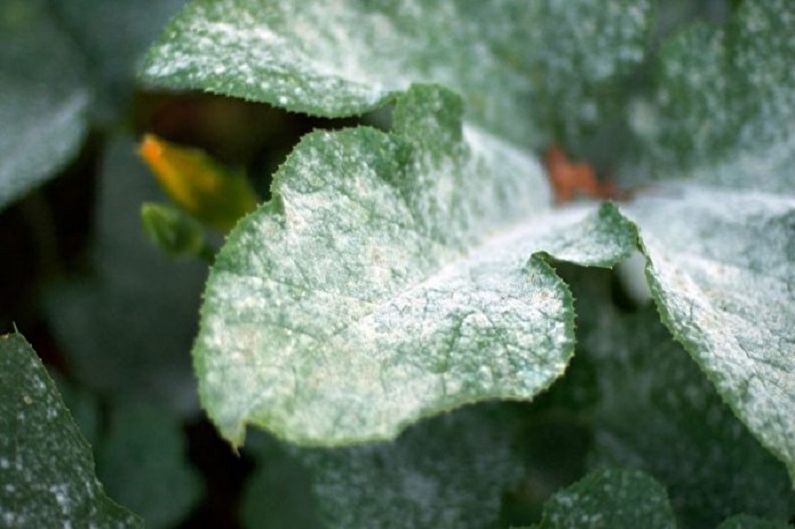
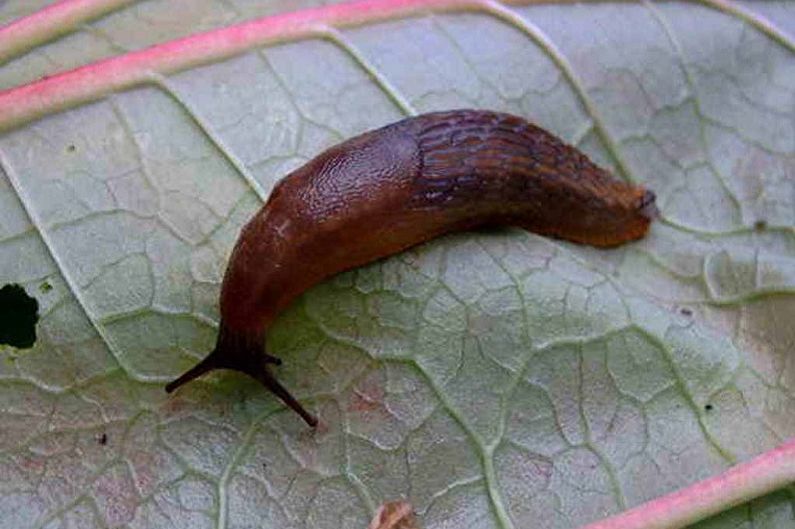
Eustoma (lisianthus) - photo
This page contains a lot of beautiful photos of eustoma (lisianthus), by viewing which you will see that this delightful flower is able to be a real decoration of any interior and garden. Considering that growing Irish roses at home from seeds is not an easy task, it will be doubly pleasant to watch exotic flowering on your own windowsill, flowerbed or garden.
